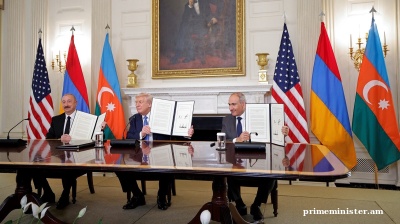COMMENT: Russian drone and jet incursions highlight shortcomings in Nato’s multilayered air defence system

A spate of Russian drone incursions has stress-tested Nato’s air defences. On September 10, nineteen Russian drones violated Poland’s airspace — the alliance’s worst such breach in more than seventy-five years.
Nato Secretary-General Mark Rutte called the response “a very successful reaction”, as Polish Dutch and Italian jet fighters and German Patriot batteries were scrambled in response to the intrusion.
However, as the Nato response only managed to bring four of the Gerbera reconnaissance drones down, unarmoured and costing only $10,000 a piece, the incident highlighted how unprepared Nato is to protect itself from a full scale Russian attack, The Economist reported in an analysis of Europe’s defences, “Europe’s new battle to defend its skies from Russia.”
The Polish incident has since been followed by incisions into Romanian and Estonian airspace as the Kremlin probes Europe’s air defences and stokes already high tensions. US president Donald Trump downplayed the tests of Nato credibility: the Ukraine conflict “is not Trump’s war” and the breaches “could’ve been a mistake”.
Europe has responded by beefing up its multilayered defences and is now talking about creating a “drone wall” with Ukraine’s participation.
Detection and early warning:
Nato’s first layer of protection is designed to see threats early and at distance. The alliance jointly owns 14 airborne early warning and control aircraft based at Geilenkirchen, Germany, and flies RQ-4D Phoenix high-altitude drones out of Sigonella, Sicily. National add-ons include Poland’s roughly $1bn aerostat programme (tethered radar balloons), US ground-based radars in Romania and Poland, and Aegis-equipped destroyers at sea with long-range sensors. Some forces have tested acoustic arrays to detect approaching drones.
Fighter cover and quick reaction:
Rotational air policing underpins day-to-day deterrence. Italy, Spain and Hungary guard Baltic airspace; Italy also patrols Romania; the Netherlands and Norway cover Poland to shield aid corridors to Ukraine. These jets search with onboard radar, escort Russian aircraft that press Nato borders and, when required — as on September 10 — conduct shoot-downs. On September 11, France sent three Rafales to Poland as reinforcement.
Ground- and sea-based interceptors:
Land-based systems give Nato a hard-kill backstop. Germany has deployed Patriot batteries to Poland, with the Netherlands planning to follow. US and European warships add layered interceptors at sea, while US ground radars in Romania and Poland deepen coverage. These assets can engage aircraft, cruise missiles and some ballistic threats.
Integration, command — and politics:
Most sensors and shooters are stitched together through Integrated Air and Missile Defence (IAMD) under Allied Air Command at Ramstein, Germany (US four-star command). Two Combined Air Operations Centres manage real-time control: one in Germany (north of the Alps) and one in Spain (south). The architecture is designed to fuse data, de-conflict fires and move assets quickly across an unusually large theatre.
On the face of it Nato’s defences seems extensive but a closer analysis reveals many flaws in the system that leave Europe vulnerable to the hardened Russian military machine.
Stock depletion and scale gap:
Many of Europe’s larger air-defence systems have been sent to Ukraine, thinning inventories at home. In August, Germany said it would send two additional Patriot systems to Ukraine, with US backfill; the US also diverted a Swiss Patriot order to Kyiv. In June, Mr Rutte said Nato would need to boost air-defence assets by 400% to meet formal war plans — a stark measure of the challenge of covering a continent-sized area.
Detection limits against small, cheap drones:
Small, slow drones are hard to pick out in radar clutter. Recent incidents illustrate the seams: debris in Romania (September 2023); missiles crossing into Poland (March 2024); a drone landing in Latvia (September 2024); and two further incursions into Poland earlier this month. One Russian cruise missile that crashed near Bydgoszcz, over 400km from the Ukrainian border, was found months later — by a woman on horseback. Nato states say some tracks were maintained (as in Latvia), and Poland chose to ignore a majority of drones on September 10 as unarmed decoys, engaging only those believed to carry warheads — a reminder that even when detection works, triage is unavoidable.
Cost-exchange mismatch and SHORAD shortfalls:
Interceptors like Patriot are uneconomical against “exceedingly cheap” drones such as the Gerbera styrofoam decoys that crossed into Poland, notes the International Institute for Strategic Studies (IISS). Allies are fielding short- and very-short-range counter-UAS (lasers, guns, rockets), but few have scaled up. “There are gaps in almost all European inventories at the short- and very short range level,” warns the IISS — vulnerabilities that mirror the drone-saturated warfare seen in Ukraine.
Command, rules and political will:
Europe’s shield still depends heavily on the US. Under Mr Trump, Washington’s focus is shifting, and it may be less willing to deploy systems or replenish interceptors in Europe. Air operations headquarters remain reliant on American involvement and expertise, even as European air forces fly hundreds of combat aircraft along the eastern flank. Political signalling has been mixed: on September 11, Mr Trump downplayed the incursions — “It could’ve been a mistake.” Nato’s rules of engagement also constrain proactive defence: acting jointly, the alliance cannot shoot down projectiles over Belarus or Ukraine without unanimous consent of all 32 members — a bar Hungary and Slovakia would likely block. While Poland’s choice to shoot down the latest salvo and publicly blame Russia marks a shift, most European capitals remain reluctant to emulate Israel’s model of pre-emptive interceptions over neighbouring countries.
On paper, Europe’s integrated mix of sensors, fighters and interceptors forms a formidable shield. In practice, depleted stocks, detection challenges, a punishing cost-exchange and political constraints leave persistent seams — precisely where cheap drones and decoys probe.
Opinion

COMMENT: Can Ukraine avoid a macroeconomic collapse? - Shevchenko
“As Ukraine enters autumn 2025, its economy teeters on the brink of a new macroeconomic shock, with its recovery potential exhausted,” Kyrylo Shevchenko, the former head of the National Bank of Ukraine said in an opinion piece on September 18.

COMMENT: Billionaire Ivanishvili’s shadow rule pushes Georgia toward autocracy
Georgia, once celebrated as a post-Soviet democratic success story, has quietly slipped into authoritarianism under the stewardship of its elusive puppet master, Bidzina Ivanishvili, says a Central Asia-Caucasus Institute report.

Washington has “surrendered” in the Central Asia battle for influence, says ex-ambassador
Russia and China now dominate narrative across region, Daniel N. Rosenblum tells students at Yale. If US cuts itself off from the world, “we will ultimately be less secure and less prosperous,” he warns.

Europe faces harsh realities in Ukraine as long war looms - Ash
Timothy Ash, senior sovereign strategist at BlueBay Asset Management in London, says European policymakers are belatedly waking up to the fact that the war in Ukraine is set to be prolonged — and that they alone may have to foot the bill.



